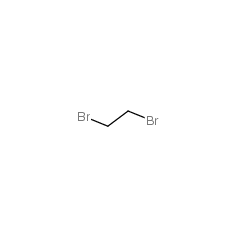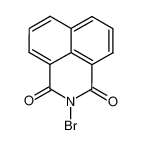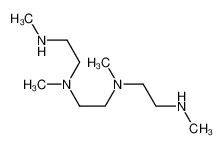| Product name | 1,2-dibromoethane |
|---|
| Product number | - |
|---|---|
| Other names | Ethane, 1,2-dibromo- |
| Identified uses | For industry use only. Volatile organic compounds |
|---|---|
| Uses advised against | no data available |
| Company | MOLBASE (Shanghai) Biotechnology Co., Ltd. |
|---|---|
| Address | Floor 4 & 5, Building 12, No. 1001 North Qinzhou Road, Xuhui District, Shanghai, China |
| Telephone | +86(21)64956998 |
| Fax | +86(21)54365166 |
| Emergency phone number | +86-400-6021-666 |
|---|---|
| Service hours | Monday to Friday, 9am-5pm (Standard time zone: UTC/GMT +8 hours). |
Acute toxicity - Oral, Category 3
Acute toxicity - Dermal, Category 3
Skin irritation, Category 2
Eye irritation, Category 2
Acute toxicity - Inhalation, Category 3
Specific target organ toxicity – single exposure, Category 3
Carcinogenicity, Category 1B
Hazardous to the aquatic environment, long-term (Chronic) - Category Chronic 2
2.2 GHS label elements, including precautionary statements| Pictogram(s) |    |
|---|---|
| Signal word | Danger |
| Hazard statement(s) | H301 Toxic if swallowed H311 Toxic in contact with skin H315 Causes skin irritation H319 Causes serious eye irritation H331 Toxic if inhaled H335 May cause respiratory irritation H350 May cause cancer H411 Toxic to aquatic life with long lasting effects |
| Precautionary statement(s) | |
| Prevention | P264 Wash ... thoroughly after handling. P270 Do not eat, drink or smoke when using this product. P280 Wear protective gloves/protective clothing/eye protection/face protection. P261 Avoid breathing dust/fume/gas/mist/vapours/spray. P271 Use only outdoors or in a well-ventilated area. P201 Obtain special instructions before use. P202 Do not handle until all safety precautions have been read and understood. P273 Avoid release to the environment. |
| Response | P301+P310 IF SWALLOWED: Immediately call a POISON CENTER/doctor/… P321 Specific treatment (see ... on this label). P330 Rinse mouth. P302+P352 IF ON SKIN: Wash with plenty of water/... P312 Call a POISON CENTER/doctor/…if you feel unwell. P361+P364 Take off immediately all contaminated clothing and wash it before reuse. P332+P313 If skin irritation occurs: Get medical advice/attention. P362+P364 Take off contaminated clothing and wash it before reuse. P305+P351+P338 IF IN EYES: Rinse cautiously with water for several minutes. Remove contact lenses, if present and easy to do. Continue rinsing. P337+P313 If eye irritation persists: Get medical advice/attention. P304+P340 IF INHALED: Remove person to fresh air and keep comfortable for breathing. P311 Call a POISON CENTER/doctor/… P308+P313 IF exposed or concerned: Get medical advice/ attention. P391 Collect spillage. |
| Storage | P405 Store locked up. P403+P233 Store in a well-ventilated place. Keep container tightly closed. |
| Disposal | P501 Dispose of contents/container to ... |
none
3.Composition/information on ingredients 3.1 Substances| Chemical name | Common names and synonyms | CAS number | EC number | Concentration |
|---|---|---|---|---|
| 1,2-dibromoethane | 1,2-dibromoethane | 106-93-4 | none | 100% |
Consult a physician. Show this safety data sheet to the doctor in attendance.
If inhaledFresh air, rest. Half-upright position. Refer immediately for medical attention.
In case of skin contactRemove contaminated clothes. Rinse and then wash skin with water and soap. Refer for medical attention .
In case of eye contactFirst rinse with plenty of water for several minutes (remove contact lenses if easily possible), then refer for medical attention.
If swallowedRinse mouth. Do NOT induce vomiting. Give one or two glasses of water to drink. Refer for medical attention .
4.2 Most important symptoms/effects, acute and delayedLocal inflammation, blisters and ulcers on skin; irritation in lungs and organic injury to liver and kidneys; may be absorbed through skin. (USCG, 1999)
4.3 Indication of immediate medical attention and special treatment needed, if necessaryRinse eyes with water. Wash polluted portions with soap and water.
5.Fire-fighting measures 5.1 Extinguishing media Suitable extinguishing mediaUse water spray or foam for fighting fires where ethylene dibromide is stored. Use water to keep fire-exposed containers cool.
5.2 Specific hazards arising from the chemicalSpecial Hazards of Combustion Products: Decomposition gases are toxic and irritating. Behavior in Fire: Decomposes into toxic irritating gases. Reacts with hot metals such as aluminum and magnesium. (USCG, 1999)
5.3 Special protective actions for fire-fightersWear self-contained breathing apparatus for firefighting if necessary.
6.Accidental release measures 6.1 Personal precautions, protective equipment and emergency proceduresUse personal protective equipment. Avoid dust formation. Avoid breathing vapours, mist or gas. Ensure adequate ventilation. Evacuate personnel to safe areas. Avoid breathing dust. For personal protection see section 8.
6.2 Environmental precautionsPersonal protection: filter respirator for organic gases and vapours adapted to the airborne concentration of the substance. Ventilation. Do NOT let this chemical enter the environment. Collect leaking and spilled liquid in sealable containers as far as possible. Absorb remaining liquid in sand or inert absorbent. Then store and dispose of according to local regulations.
6.3 Methods and materials for containment and cleaning up1. VENTILATE AREA OF SPILL OR LEAK. 2. IF IN LIQ FORM, COLLECT FOR RECLAMATION OR ABSORB IN VERMICULITE, DRY SAND, EARTH, OR SIMILAR MATERIAL. 3. IF IN SOLID FORM, COLLECT ... IN MOST CONVENIENT & SAFE MANNER FOR RECLAMATION.
7.Handling and storage 7.1 Precautions for safe handlingAvoid contact with skin and eyes. Avoid formation of dust and aerosols. Avoid exposure - obtain special instructions before use.Provide appropriate exhaust ventilation at places where dust is formed. For precautions see section 2.2.
7.2 Conditions for safe storage, including any incompatibilitiesSeparated from strong oxidants, strong bases, powdered metals and food and feedstuffs. See Chemical Dangers. Ventilation along the floor. Store in an area without drain or sewer access.Store in a cool, dry, dark, well-ventilated location. Separate from oxidizing materials, alkali metal, ammonia.
8.Exposure controls/personal protection 8.1 Control parameters Occupational Exposure limit valuesRecommended Exposure Limit: 10 Hr Time-Weighted avg: 0.O45 ppm
Recommended Exposure Limit: 15 min Ceiling value: 0.13 ppm.
NIOSH recommends that ethylene dibromide be regulated as a potential human carcinogen.
NIOSH usually recommends that occupational exposures to carcinogens be limited to the lowest feasible concn.
Biological limit valuesno data available
8.2 Appropriate engineering controlsHandle in accordance with good industrial hygiene and safety practice. Wash hands before breaks and at the end of workday.
8.3 Individual protection measures, such as personal protective equipment (PPE) Eye/face protectionSafety glasses with side-shields conforming to EN166. Use equipment for eye protection tested and approved under appropriate government standards such as NIOSH (US) or EN 166(EU).
Skin protectionWear impervious clothing. The type of protective equipment must be selected according to the concentration and amount of the dangerous substance at the specific workplace. Handle with gloves. Gloves must be inspected prior to use. Use proper glove removal technique(without touching glove's outer surface) to avoid skin contact with this product. Dispose of contaminated gloves after use in accordance with applicable laws and good laboratory practices. Wash and dry hands. The selected protective gloves have to satisfy the specifications of EU Directive 89/686/EEC and the standard EN 374 derived from it.
Respiratory protectionWear dust mask when handling large quantities.
Thermal hazardsno data available
9.Physical and chemical properties| Physical state | clear liquid |
|---|---|
| Colour | Heavy liquid |
| Odour | Chloroform odor |
| Melting point/ freezing point | 317°C(lit.) |
| Boiling point or initial boiling point and boiling range | 132°C |
| Flammability | Noncombustible LiquidNot combustible. Gives off irritating or toxic fumes (or gases) in a fire. |
| Lower and upper explosion limit / flammability limit | no data available |
| Flash point | 103°C(lit.) |
| Auto-ignition temperature | Not flammable (USCG, 1999) |
| Decomposition temperature | no data available |
| pH | no data available |
| Kinematic viscosity | 1.727 cP @ 20°C |
| Solubility | In water:4 g/L (20 ºC) |
| Partition coefficient n-octanol/water (log value) | log Kow = 1.96 |
| Vapour pressure | 11.7 mm Hg ( 25 °C) |
| Density and/or relative density | 2.173 |
| Relative vapour density | ~6.5 (vs air) |
| Particle characteristics | no data available |
no data available
10.2 Chemical stability/1,2-Dibromomethane/ is stable and nonflammable.
10.3 Possibility of hazardous reactionsNot flammableETHYLENE DIBROMIDE slowly decomposes in the presence of light and heat. Turns brown upon exposure to light. Corrosive to iron and other metals. May decompose upon contact with alkalis. Incompatible with oxidizing agents. Reacts with sodium, potassium, calcium, powdered aluminum, zinc, magnesium and liquid ammonia. May attack some plastics, rubber and coatings. May poison platinum catalysts [Hawley]. Reacts as an alkylating agent .
10.4 Conditions to avoidno data available
10.5 Incompatible materialsIncompatible with calcium, liquid ammonia, zinc, sodium, potassium, and strong oxidizers.
10.6 Hazardous decomposition productsAt 240-270°C in a glass vessel, ethylene bromide decomposes into vinyl bromide & hydrogen bromide.
11.Toxicological information Acute toxicity- Oral: LD50 Rat oral 108 mg/kg
- Inhalation: LC50 Rat inhalation 14,300 mg/cu m/30 min
- Dermal: no data available
no data available
Serious eye damage/irritationno data available
Respiratory or skin sensitizationno data available
Germ cell mutagenicityno data available
CarcinogenicityNTP: Reasonably anticipated to be a human carcinogen, EPA: Probable human carcinogen, IARC: Probably carcinogenic to humans
Reproductive toxicityno data available
STOT-single exposureno data available
STOT-repeated exposureno data available
Aspiration hazardno data available
12.Ecological information 12.1 Toxicity- Toxicity to fish: LC50 Lepomis macrochirus 18 mg/l/48 hr /Conditions of bioassay not specified
- Toxicity to daphnia and other aquatic invertebrates: no data available
- Toxicity to algae: no data available
- Toxicity to microorganisms: no data available
Ethylene dibromide degraded readily in primary sewage sludge suspensions under both aerobic and anaerobic conditions(1); under aerobic conditions, degradation occurred within days, while under anaerobic conditions, degradation took 5-6 weeks(1). In three day die-away tests using Japanese river and seawater, ethylene dibromide was observed to have moderate degradation (21-35% degradation)(2). Low concs of ethylene dibromide (<100 ug/l) were biotransformed completely within 2 weeks by a reductive dehalogenation under methanogenic conditions in a continuous-flow column(3); sterile controls showed that some abiotic degradation was also occurring, but microbial degradation was dominant(3). In a microcosm study simulating methanogenic conditions found in aquifer material, ethylene dibromide was found to biodegrade relatively rapidly(4); after 16 weeks of incubation, greater than 99% of initial ethylene dibromide was transformed(4); in sterile controls, only 20% was transformed after 40 weeks(4).
12.3 Bioaccumulative potentialA BCF for ethylene dibromide has been measured to be < 1(1). Orange red killifish exposed to an aqueous solution containing ethylene dibromide at 15 and 150 ug/l had a BCF ranging from <3.5-14.9 and 1.6-3.2, respectively(2). According to a classification scheme(3), these BCF values suggest the potential for bioconcentration in aquatic organisms is low(SRC).
12.4 Mobility in soilEthylene dibromide exhibits slow to moderate adsorption to soil with measured Koc values ranging from 14 to 160(1). According to a classification scheme(2), these Koc values suggest that ethylene dibromide is expected to have high to very high mobility in soil.
12.5 Other adverse effectsno data available
13.Disposal considerations 13.1 Disposal methods ProductThe material can be disposed of by removal to a licensed chemical destruction plant or by controlled incineration with flue gas scrubbing. Do not contaminate water, foodstuffs, feed or seed by storage or disposal. Do not discharge to sewer systems.
Contaminated packagingContainers can be triply rinsed (or equivalent) and offered for recycling or reconditioning. Alternatively, the packaging can be punctured to make it unusable for other purposes and then be disposed of in a sanitary landfill. Controlled incineration with flue gas scrubbing is possible for combustible packaging materials.
14.Transport information 14.1 UN Number| ADR/RID: UN1605 | IMDG: UN1605 | IATA: UN1605 |
| ADR/RID: ETHYLENE DIBROMIDE |
| IMDG: ETHYLENE DIBROMIDE |
| IATA: ETHYLENE DIBROMIDE |
| ADR/RID: 6.1 | IMDG: 6.1 | IATA: 6.1 |
| ADR/RID: III | IMDG: III | IATA: III |
| ADR/RID: yes | IMDG: yes | IATA: yes |
no data available
14.7 Transport in bulk according to Annex II of MARPOL 73/78 and the IBC Codeno data available
15.Regulatory information 15.1 Safety, health and environmental regulations specific for the product in question| Chemical name | Common names and synonyms | CAS number | EC number |
|---|---|---|---|
| 1,2-dibromoethane | 1,2-dibromoethane | 106-93-4 | none |
| European Inventory of Existing Commercial Chemical Substances (EINECS) | Listed. | ||
| EC Inventory | Listed. | ||
| United States Toxic Substances Control Act (TSCA) Inventory | Listed. | ||
| China Catalog of Hazardous chemicals 2015 | Listed. | ||
| New Zealand Inventory of Chemicals (NZIoC) | Listed. | ||
| Philippines Inventory of Chemicals and Chemical Substances (PICCS) | Listed. | ||
| Vietnam National Chemical Inventory | Listed. | ||
| Chinese Chemical Inventory of Existing Chemical Substances (China IECSC) | Listed. | ||
| Creation Date | Aug 10, 2017 |
|---|---|
| Revision Date | Aug 10, 2017 |
- CAS: Chemical Abstracts Service
- ADR: European Agreement concerning the International Carriage of Dangerous Goods by Road
- RID: Regulation concerning the International Carriage of Dangerous Goods by Rail
- IMDG: International Maritime Dangerous Goods
- IATA: International Air Transportation Association
- TWA: Time Weighted Average
- STEL: Short term exposure limit
- LC50: Lethal Concentration 50%
- LD50: Lethal Dose 50%
- EC50: Effective Concentration 50%
- IPCS - The International Chemical Safety Cards (ICSC), website: http://www.ilo.org/dyn/icsc/showcard.home
- HSDB - Hazardous Substances Data Bank, website: https://toxnet.nlm.nih.gov/newtoxnet/hsdb.htm
- IARC - International Agency for Research on Cancer, website: http://www.iarc.fr/
- eChemPortal - The Global Portal to Information on Chemical Substances by OECD, website: http://www.echemportal.org/echemportal/index?pageID=0&request_locale=en
- CAMEO Chemicals, website: http://cameochemicals.noaa.gov/search/simple
- ChemIDplus, website: http://chem.sis.nlm.nih.gov/chemidplus/chemidlite.jsp
- ERG - Emergency Response Guidebook by U.S. Department of Transportation, website: http://www.phmsa.dot.gov/hazmat/library/erg
- Germany GESTIS-database on hazard substance, website: http://www.dguv.de/ifa/gestis/gestis-stoffdatenbank/index-2.jsp
- ECHA - European Chemicals Agency, website: https://echa.europa.eu/




































